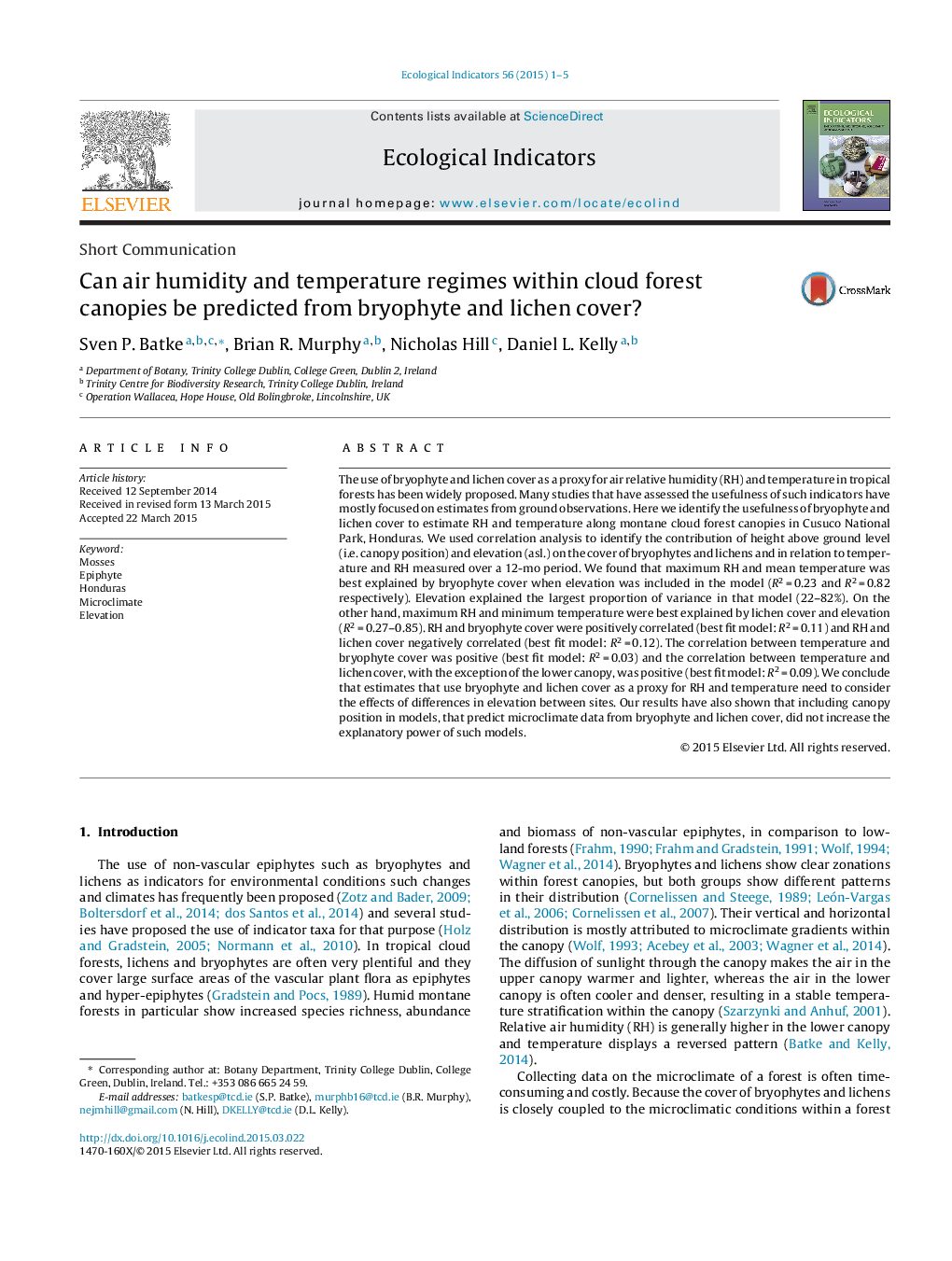| Article ID | Journal | Published Year | Pages | File Type |
|---|---|---|---|---|
| 6294317 | Ecological Indicators | 2015 | 5 Pages |
The use of bryophyte and lichen cover as a proxy for air relative humidity (RH) and temperature in tropical forests has been widely proposed. Many studies that have assessed the usefulness of such indicators have mostly focused on estimates from ground observations. Here we identify the usefulness of bryophyte and lichen cover to estimate RH and temperature along montane cloud forest canopies in Cusuco National Park, Honduras. We used correlation analysis to identify the contribution of height above ground level (i.e. canopy position) and elevation (asl.) on the cover of bryophytes and lichens and in relation to temperature and RH measured over a 12-mo period. We found that maximum RH and mean temperature was best explained by bryophyte cover when elevation was included in the model (R2Â =Â 0.23 and R2Â =Â 0.82 respectively). Elevation explained the largest proportion of variance in that model (22-82%). On the other hand, maximum RH and minimum temperature were best explained by lichen cover and elevation (R2Â =Â 0.27-0.85). RH and bryophyte cover were positively correlated (best fit model: R2Â =Â 0.11) and RH and lichen cover negatively correlated (best fit model: R2Â =Â 0.12). The correlation between temperature and bryophyte cover was positive (best fit model: R2Â =Â 0.03) and the correlation between temperature and lichen cover, with the exception of the lower canopy, was positive (best fit model: R2Â =Â 0.09). We conclude that estimates that use bryophyte and lichen cover as a proxy for RH and temperature need to consider the effects of differences in elevation between sites. Our results have also shown that including canopy position in models, that predict microclimate data from bryophyte and lichen cover, did not increase the explanatory power of such models.
